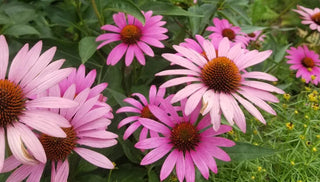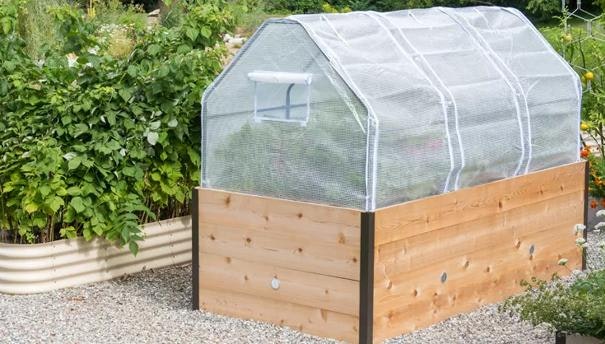Coneflowers, black-eyed susans and bee balm are all relatively drought tolerant, once they’re established.
Gardens and landscapes nationwide are facing the one-two punch of record-breaking heat and drought. Although there’s nothing you can do to change the weather, there are a few things you can do to help your plants survive this challenge.
Some of the effects of drought are obvious: brown lawns, crispy leaves, smaller flowers and fewer fruits. Other effects are less obvious but just as dire:
- Prolonged drought weakens plants, making them more susceptible to insect and disease attack.
- If dry conditions continue into fall, plants may show a decrease in winter hardiness.
- The drought has caused a scarcity of food for some wildlife species, leading them into home landscapes in search of sustenance.
How are you dealing with the drought? Share your tips and techniques by adding a comment at the end of this post.
The Snip-n-Drip Soaker System makes it easy to create a customized, efficient watering system.
10 Ways to Help Your Garden Survive a Drought
1. Water deeply, but infrequently.
A weekly deep soaking is better than daily sprinklings because it encourages deep roots and helps flush any salt build-up in the soil.
2. Apply water right to the soil.
Use self-watering containers or a soaker hose to provide a steady supply of water to roots. Overhead watering is great, but a lot of water can be lost to evaporation.
3. Water slowly.
Let water soak in, rather than running off. Soaker hoses and a water timer make it easy to apply a deep, thorough soaking.
4. Apply mulch.
A 2″ to 3″ layer of bark mulch, shredded leaves, or pine straw helps conserve moisture and insulates the soil, keeping it cooler than exposed soil. Apply mulch to the soil in container plantings, too.
5. Stop fertilizing.
Feeding plants encourages flushes of tender, thirsty growth, and the more a plant grows, the more water it needs. Avoid applying synthetic fertilizers to drought-affected plants, because excess fertilizer salts can accumulate in the soil if there isn’t sufficient rainfall to leach them out.
6. Avoid heavy pruning.
Like fertilizing, pruning perennials, trees, and shrubs stimulates new growth at a time when plants need to be conserving energy.
7. Pick plants wisely.
If water rationing or costs force you to water selectively, focus your watering efforts on trees, shrubs and perennials. Most lawn grasses will survive periods of drought; they may turn brown and look dead, but in many cases the roots survive and will resprout. Learn more about how to water trees.
8. Collect when you can.
Rain barrels can capture a surprising amount of water from roof runoff. Set up a rain barrel to collect water for use during hotter, drier times. Learn more about how to install a rain barrel and how much water you can harvest from your roof.
9. Keep a close eye out for pests.
Drought-stressed plants are more susceptible to attack by insects and disease organisms. Watch out for animal pests, too, that may turn to foraging in home landscapes.
10. Go native!
Consider replacing thirsty, high-demand ornamental varieties with native plants that are adapted to dry conditions. Bonus: you'll help support local wildlife too!





